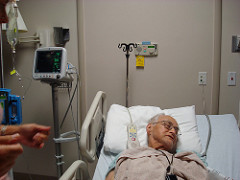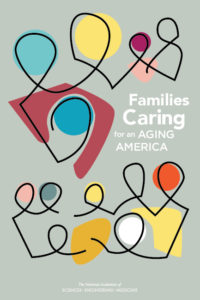Missed opportunities to identify elder abuse

credit: Anique (cc license)
Elder abuse affects approximately 1 in 10 older adults in the United States with serious, long-lasting effects on physical and mental health. With over 23 million emergency department visits by older adults annually, the ED is an important setting to identify elder abuse, initiate interventions to ensure patient safety, and deal with unmet care needs.
But according to a recent study, emergency providers make a formal diagnosis of elder abuse in just one in 7,700 visits. This indicates that a majority of victims of elder abuse pass through the emergency department without the problems being identified, according to senior study author Timothy Platts-Mills, MD, assistant professor of emergency medicine and co-director of the division of geriatric emergency medicine at the University of North Carolina School of Medicine. The research appears in the September 2016 issue of the Journal of the American Geriatrics Society.
Platts-Mills said that given the burden of this problem, this is a major missed opportunity. Emergency providers strive to make sure that for each patient who comes through the door, all serious and life-threatening conditions are identified and addressed, but “for elder abuse, EDs across the country are falling short.”
Identifying elder abuse is challenging. Older adults who are physically frail or have cognitive impairment are vulnerable to injuries and may have difficulty caring for themselves.
“It can be very difficult distinguishing whether a bruise is from a fall or physical abuse, or whether poor hygiene is a result of a patient asking to be left alone or the result of overt neglect on the part of a care provider,” Platts-Mills said. “But those difficulties don’t change the reality that elder abuse is common, takes a tremendous toll on its victims, and is frequently missed.”
In New York State, 76 out of every 1,000 older New Yorkers were victims of elder abuse in a one year period. The Elder Abuse Prevalence in New York State study found a dramatic gap between the rate of elder abuse events reported by older New Yorkers and the number of cases referred to and served in the formal elder abuse service system. The reported incidence rate is nearly 24 times greater than the number of referred cases. This suggests that many elders are not seeking – or getting – the assistance they need.
Elder abuse comes in many forms:
- Emotional Abuse: causing mental anguish and despair by name calling, or by insulting, ignoring, threatening, isolating, demeaning, and controlling behavior.
- Financial Abuse: illegally or unethically exploiting an older person through use of his/her cash, credit cards, funds or other assets without permission or through coerced permission. An analysis by the office of New York State Attorney General Eric Schneiderman recently found that phone scams aimed at the elderly are on the rise.
- Physical Abuse: slapping, bruising, coercing (including sexual coercion), cutting, burning, or forcibly restraining an older person.
- Neglect: refusing or failing to carry out caretaking responsibilities (e.g., withholding food, medicine, glasses or dentures); also, abandoning a dependent older person.
Tackling this problem takes education and resources, including more health provider training and greater access to social workers who can identify and address unmet care needs, according to Platts-Mills. His team is currently looking at ways to improve the identification of elder abuse in the emergency department through new setting-specific screening tools.
Anyone who suspects elder abuse can contact their state’s Adult Protective Services, the Eldercare Locator online or at 1-800-677-1116. If someone is in immediate danger, please call 911.
[caption id="attachment_11769" align="alignright" width="240"] credit: Anique (cc





